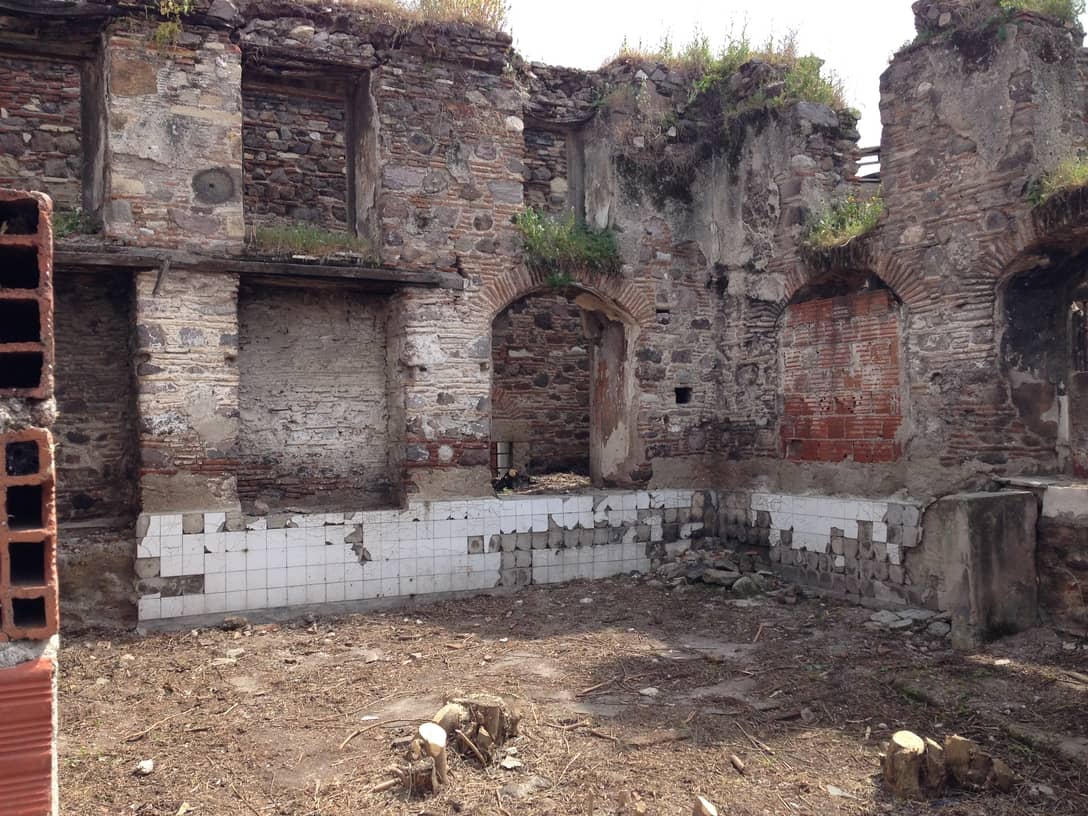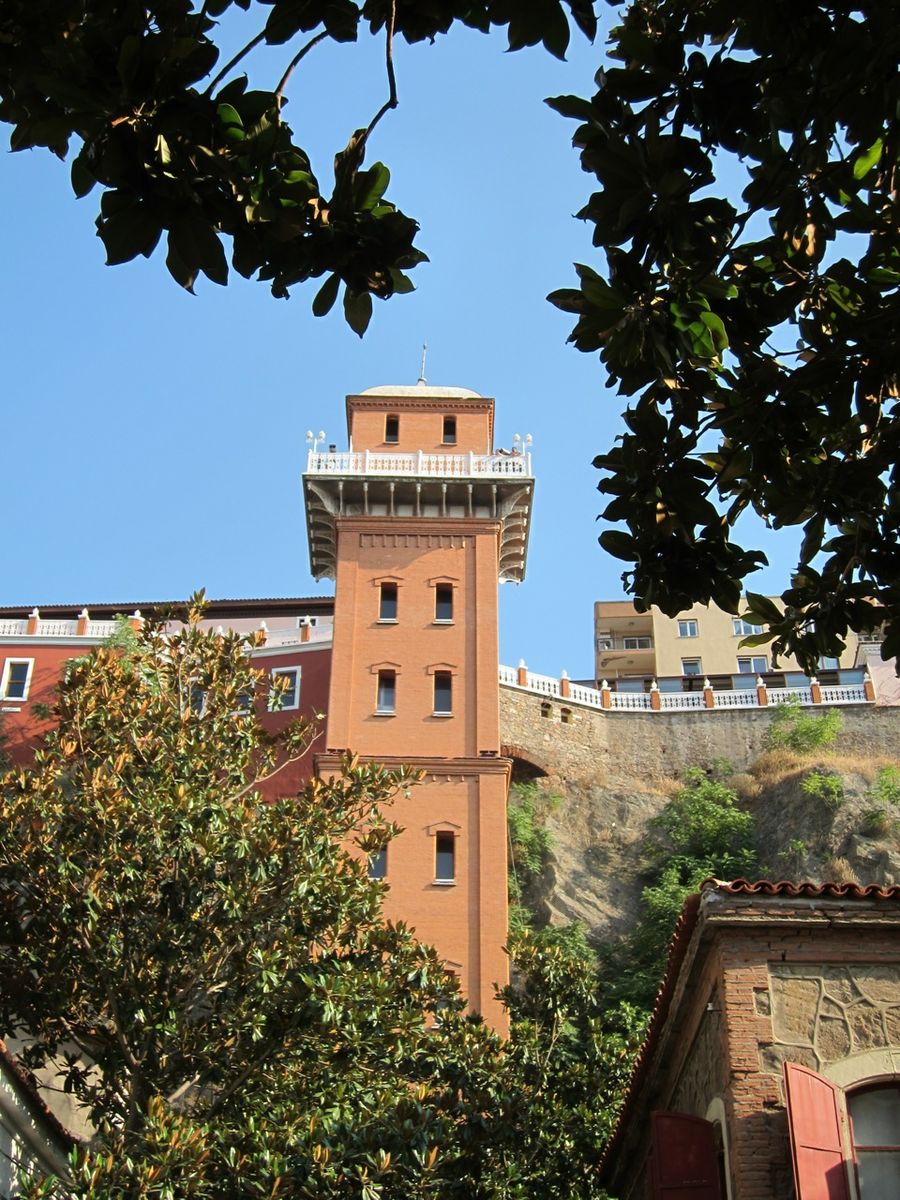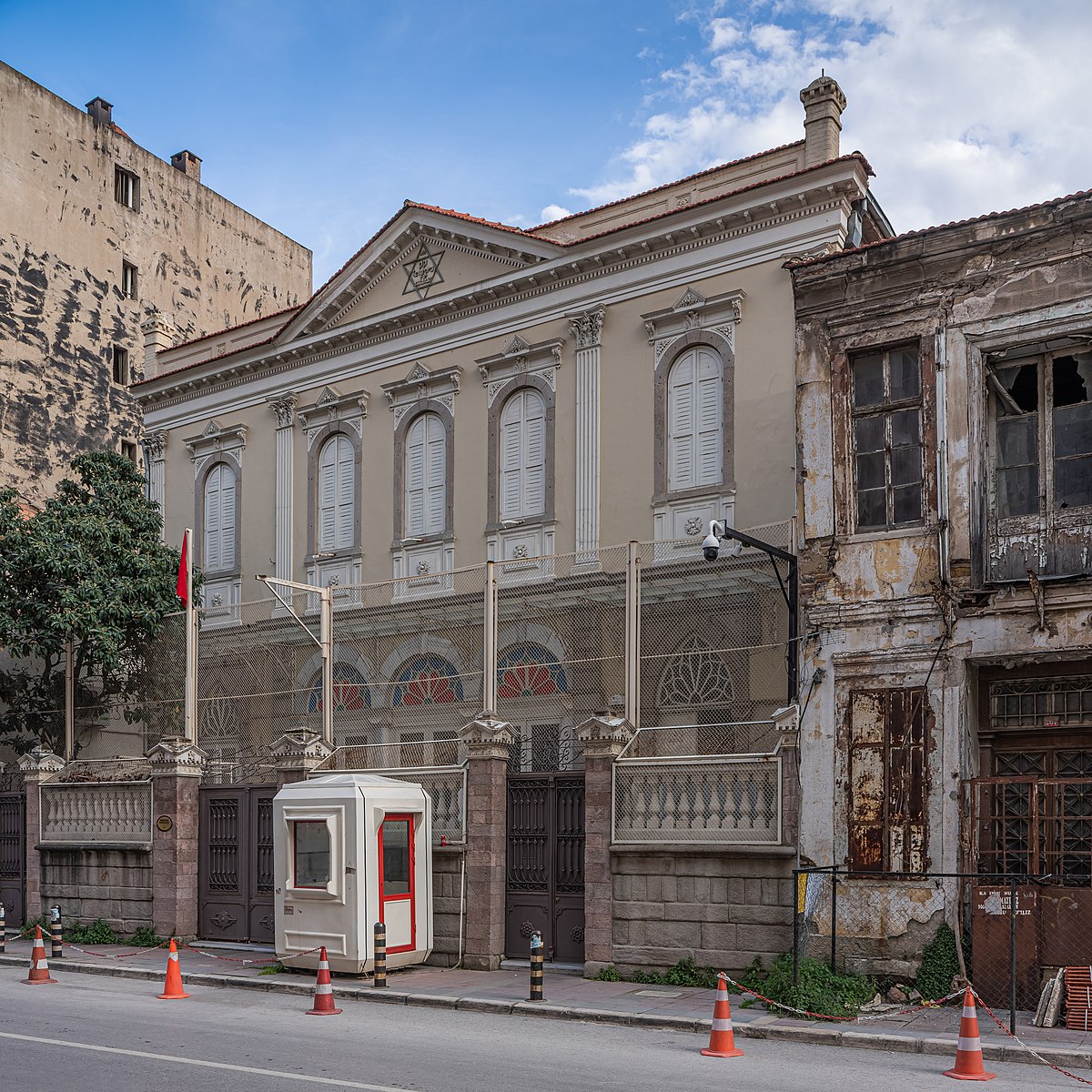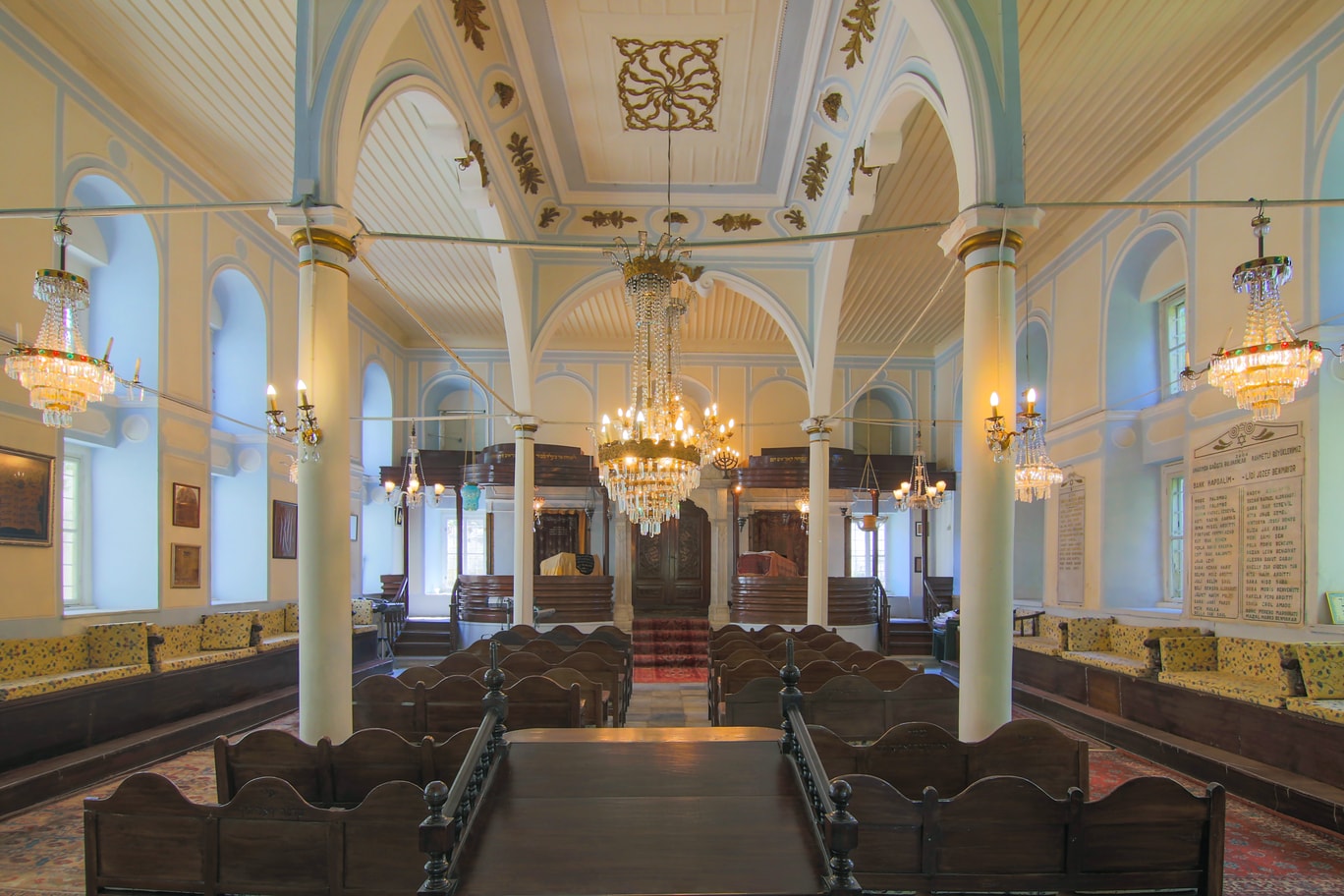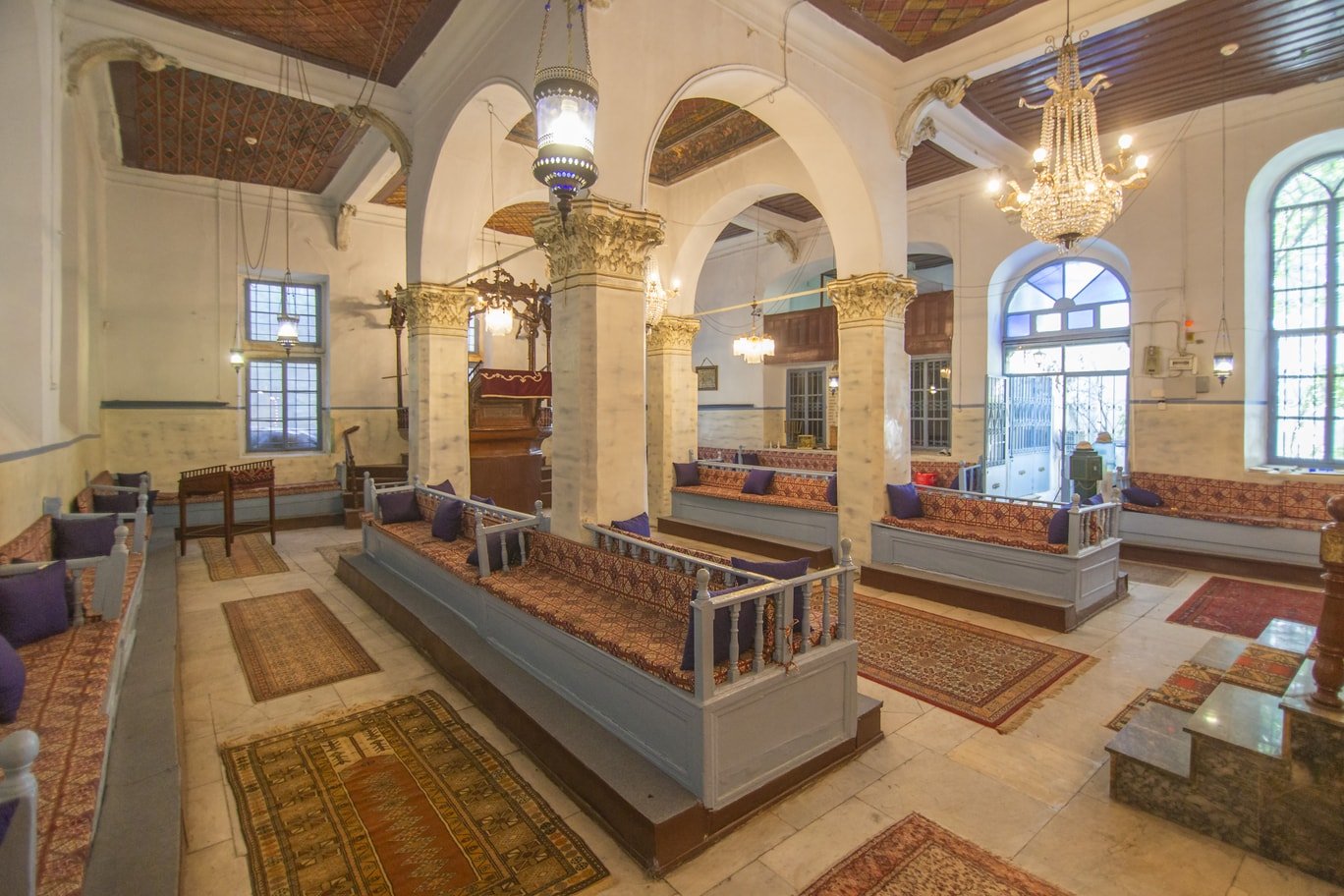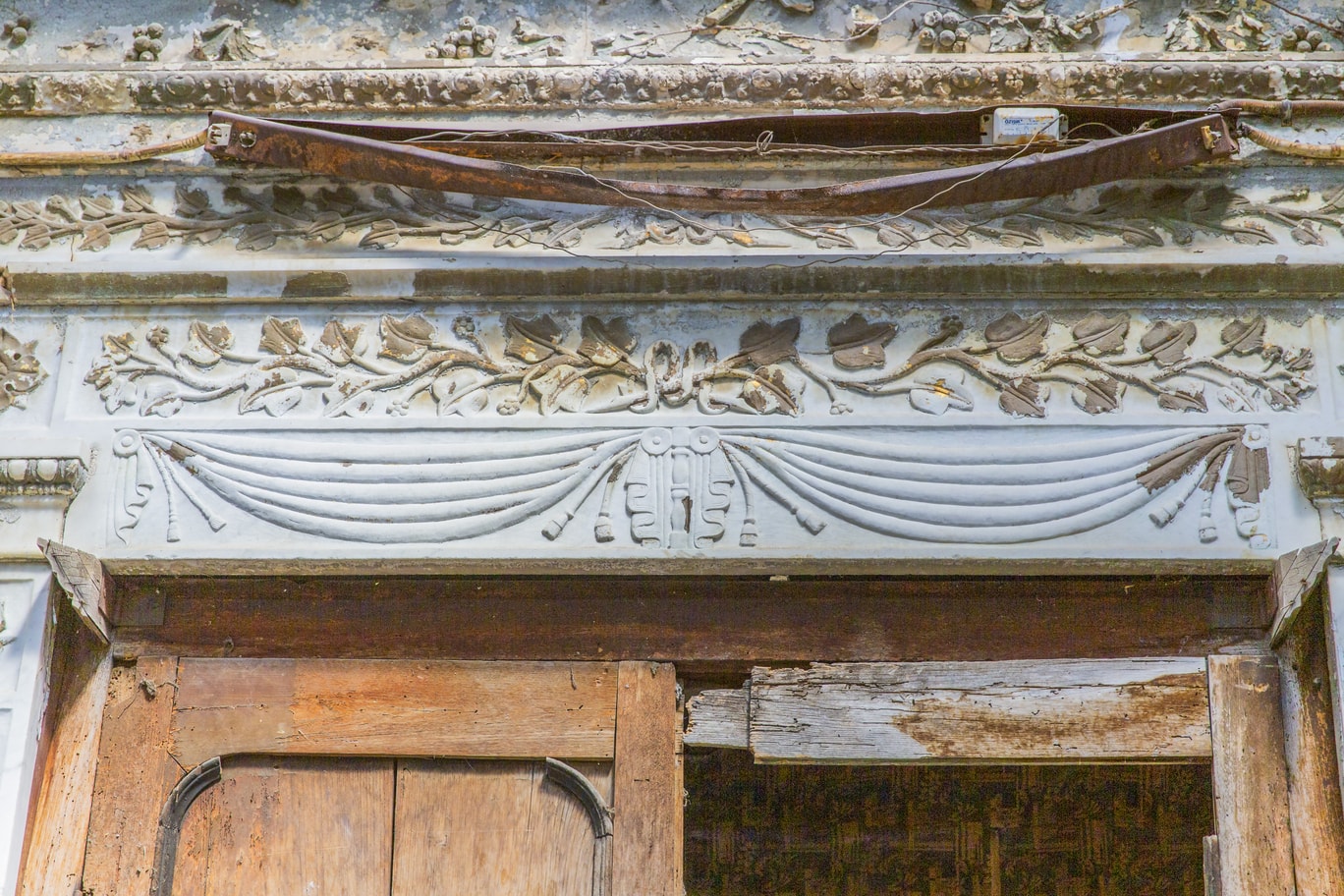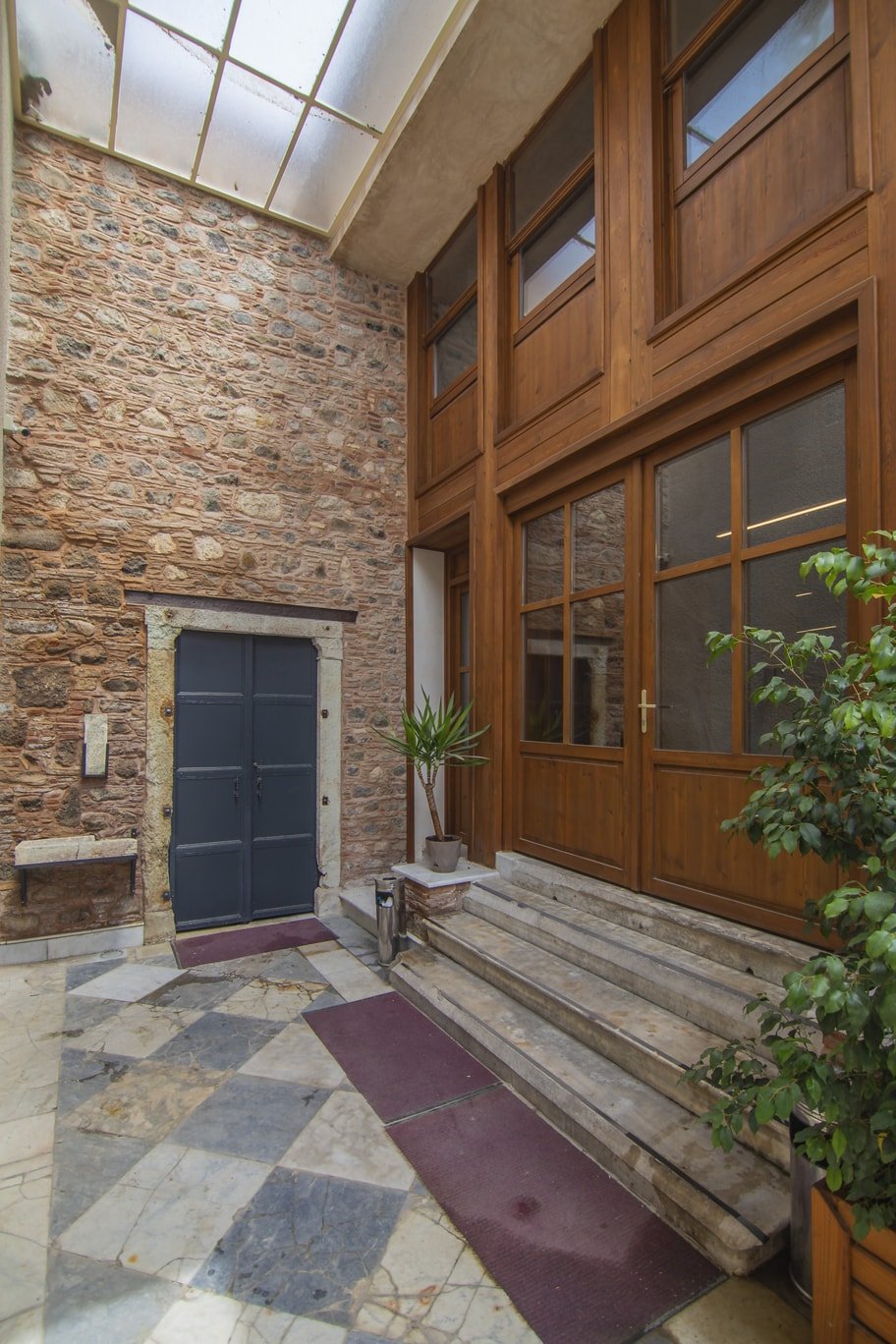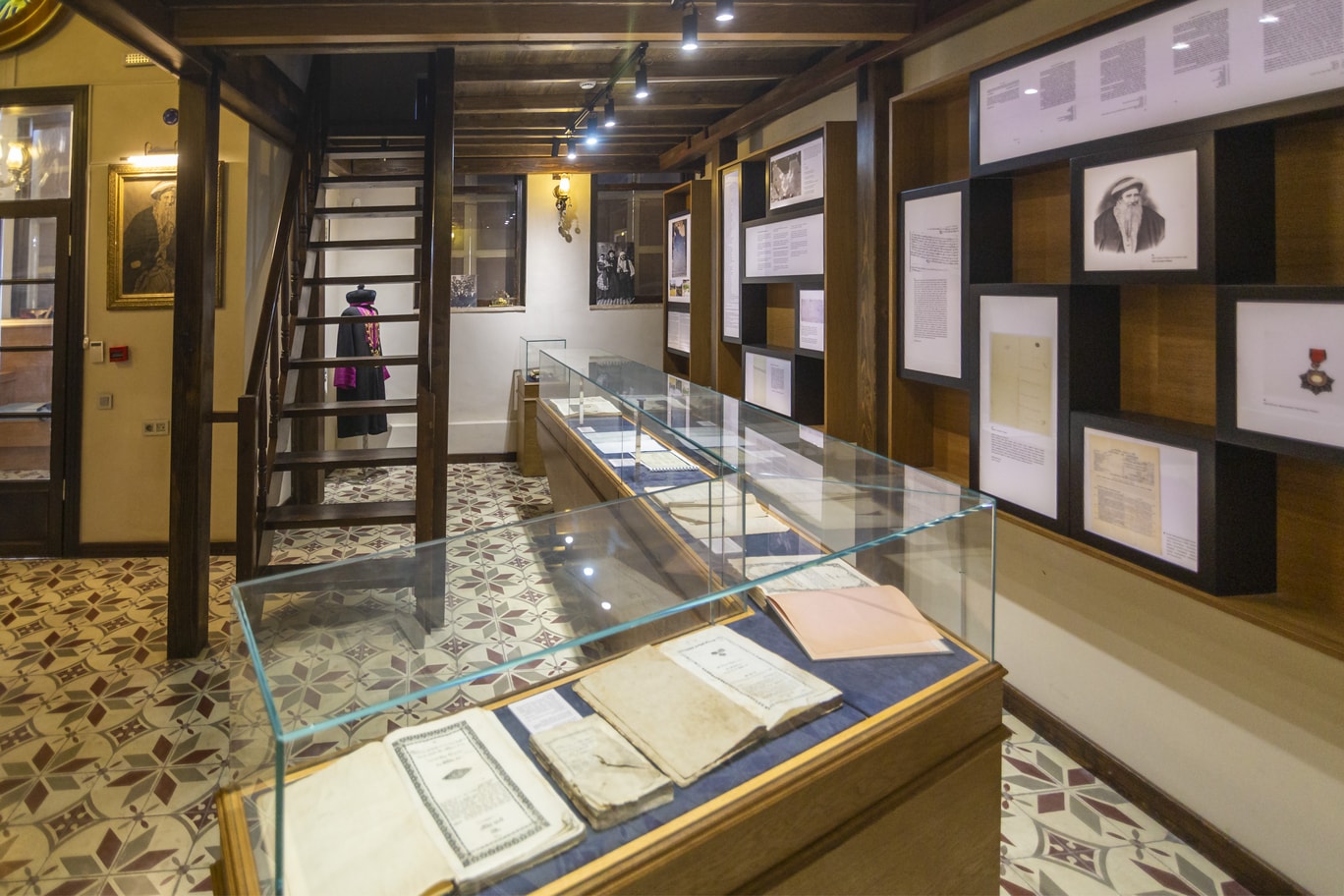Located in the heart of the old Jewish quarter, which is the historical market place of Izmir, the synagogue was known with two names. “Orahim” (in Hebrew) and “Foresteros” (in Spanish), meaning “foreigners” or “guests” in both languages indicates that it served new Jewish immigrants who came to Izmir and joined the local Jewish community. The synagogue was probably built in the 17th century and was active until it was destroyed by a fire. After it collapsed and ceased to function as a synagogue, its courtyard was transformed to a kosher poultry slaughterhouse where atonement ceremonies were held before Yom Kippur.
Site Tag: Attraction
The Elevator (“Tarihi Asansör”)
The Elevator was built by Nesim Levi, a Jewish businessman, in 1907 to over come the topographic barrier between the districts of Mithatpasa Street (at sea level) and Halil Rifat Pasa Street (at hill top).
At the beginning of the 20th century, before the construction of the Elevator, to move up and down in the area one had to choose between a long way to walk and 155 stairs to climb. This public street elevator tower, with originally water driven two lift cabins, was an innovative way of transportation facilitating pedestrian traffic, as well as contributing to the progress of the city.
With its upper promenade, the historical Elevator is the best structure to get an unparalleled view of the Gulf of Izmir. Also, a charming old street exists at the foot of the Elevator, named after Dario Moreno, an international singer and a native of Izmir.
Bet Israel Synagogue
The Jewish bourgeoisie which started to develop in the middle of the 19th century, left the traditional Jewish quarters and founded a new residential area. This area was the southern coast and hills of the bay, now known as Karatas district. With the gradual population increase in this area, the existing synagogues became insufficient.
To build a new and larger synagogue, an application was filed with Sultan Abdulhamid II. Upon the Sultan’s edict, the construction of Beit Israel Synagogue started on 15th March 1905 and was opened to prayer in 1907. However, economic distress delayed the completion of its internal decoration and the synagogue took its present state only by 1950.
Beit Israel is the largest, most magnificent and ceremonial synagogue of Izmir. However, with the building style and sitting order, the synagogue is particularly different from the conventional Izmir style. Not constructed with a central plan, but there has been a double Tevah application from the beginning. Due to the position of the building plot, the Ehal has been placed in the southern wall instead of the eastern wall.
Originally the synagogue was thought to be covered with a large dome, but due to economic distress, it ended up having a smaller, central dome. The woodwork of Beit Israel Synagogue, reminiscent of Italian synagogues, was performed by the use of massive mahogany of the Italian master workers.
Bet Israel Synagogue is two-storeyed. While the downstairs is reserved for the men, the upstairs has been built as the women’s section. At present, the upstairs houses a small exhibition hall consisting of religious objects, documents and photographs.
Sinyora (Señora) Synagogue
According to the most popular story, this synagogues was built with the donations of a lady named Donna Gracia Nassi. Known with the nicknames Gveret or La Sinyora, among the European Jews, she was the aunt of Yosef Nassi, who rose to important positions in the Ottoman Empire.
However, the Turkish Jewish historian Avram Galante admits that this synagogue is likely to have been built by a Dutch Jewish lady named Osbio or Aseo, also the founder of the Lazaretto .
Burnt repeatedly in the 16th and 17th centuries, the building was completely destroyed in the fire of 1841 and was rebuilt with the contributions of Moiz Bengiat Yerusalmi.
It can clearly be seen from the ground layout of the synagogue that it was transformed from central plan to dual Tevah application. The Ehal fits the triple composition, unique to Izmir, with its doors carrying lines from the Torah.
Algazi Synagogue
Due to the inscription at the entrance of the Algazi Synagogue, it is accepted that it was built in 1724 by Isaac Algazi. Another view claims that this synagogue existed at least in the 17th century and was controlled by Sabetay Sevi in 1666.
The basement floor was used as Midrash and was a place where Asara Batlanim (ten old men) prayed for the salvation of the country and the people all day long. In addition, unused scriptures and religious objects were stored there before being buried. This place was known as “El Kal de Abaşo” (the Lower Synagogue).
Izak Ben Salomon Algazı, another member of the Algazi Family known to have raised prominent rabbis, is also an associated figure with this synagogue. Born in 1889, he was educated at Yeshiva Bet Hillel (religious school) of Hayim Palaçi, and like his ancestors, he became a Hazan (cantor) at the Algazi Synagogue. Izak Algazi has been considered as one of the most important composers of religious, secular and classical Turkish music.
Shalom Synagogue
Shalom Synagogue is also known by the name of “El Kal de la Tromba” (the Synagogue of the Pump). It is the synagogue in which Joseph Escapa, Chief Rabbi as from 1620, had achived to organize the Jewish Community and became the leader starting from 1648.
Rabbi Escapa also provided young Sabbatai Zvi with religious education, but once Zvi declared himself Messiah, he got the ball running in the latter’s dismissal from Izmir.
Shalom Synagogue is the only synagogue which was not destroyed by the fire of 1841. The interior, which may be said to be the most authentic synagogue of Izmir, is reminiscent of a typical Anatolian house with its ceiling decorated with engravings, and floral cushioned sofas along the walls. Although it was built in the central style, in 1939, the Tevah was replaced before the wall across the Ehal.
Hevra (Talmud Tora) Synagogue
Hevra Sinagogue’s name is mentioned in very old texts as “Talmud Torah”. Known to have existed during the period of Joseph Escapa, in the 17th century, this synagogue was burnt in fires and rebuilt several times. Rebuilt after the fire in 1838 by Chelebi and Menahem Hacez brothers, it was burnt again in the fire of 1841 and remained in a ruined state for many years.
Built in the central plan, the Hevra Synagogue is a typical Izmir synagogue with its Tevah, triple Ehal composition and Midrash. The Tevah here, alike to Shalom Synagogue, was in the form of the prow of a galley inspired by the Ottoman galleys which brought the Jews from Spain. The huge number of the Sefer Torah (Torah scrolls) once available in the Hevra Synagogue, ensured a prestigious status.
The roof of Hevra Synagogue collapsed in 1999. Rescue works have been completed in 2020, but the restoration of the synagogue is yet to be started.
Etz Hayim Synagogue
A document beloning to Salomon Ben Ezra, who died in 1688, mentions that Muslim Turks prayed in the only existing synagogue of Izmir. The period mentioned in this document is thought to coincide with the period of the Turkish conquest of Izmir and that they prayed in this synagogue since there was no mosque in the city.
This synagogue, surviving through the dangers of fire and earthquakes many times, was damaged in the fire of 1841 and Daniel de Sidi had it repaired in 1851.
The synagogue originally built in a central plan. Inspired by European synagogue architecture, in the early twentieth century, the Tevah was moved from the center to the sides of the Ehal.
Portuguese Synagogue
The Portuguese Synagogue is the only synagogue in Izmir which identifies the origin of its founders. It is one of the six synagogues known to have existed in the period of Chief Rabbi Joseph Escapa, i.e., as of 1620s, and is referred to be the largest synagogue in Izmir in that period.
Portuguese Synagogue, considered to be the fortress of the anti-Sabbataists, closed its gates to Sabbatai Zvi when his movement expanded. On the other hand, Sabbatai and his supporters entered the synagogue by breaking the gates and chased away the rabbis who were the leaders of their opponents. Salomon Algazi, one of the founders of Algazi Synagogue, was among them.
When Sabbatai Zvi declared himself as the Messiah of the Jews and 18th June 1666 as the deliverance day in that raid, Portuguese Synagogue became the headquarters of the Sabbataist movement and a large group of the Jews of Izmir joined the movement.
Portuguese Synagogue was burnt in 1976 and restored in 2018, to serve as a social activities center.
Bet Hillel Synagogue
Bet Hillel Synagogue was established in the house of the Palachi family. Rabbi Hayim Palachi (1788-1869) and his son Rabbi Abraham Palachi (1809-1899) were the most prominent theologians of the Izmir Jewish community in the 19th century. Both being referred to as the greatest men of the period, their reputation went beyond Izmir and the Ottoman Empire then, causing the Jewish theologues of Europe and Middle East to come to Izmir for consultation.
Rabbi Hayim Palachi wrote a total of 72 books all through his life, and of these, 26 books were published. He was awarded the “theologian responsible for justice” in 1861 by the Sultan Abdulmecid.
Along with the tomb of Rabbi Hayim Palachi and the Mikveh (purification pool) in the Gurcesme cemetery, Bet Hillel Synagogue is believed to be among the holy places by Palachi’s students.
